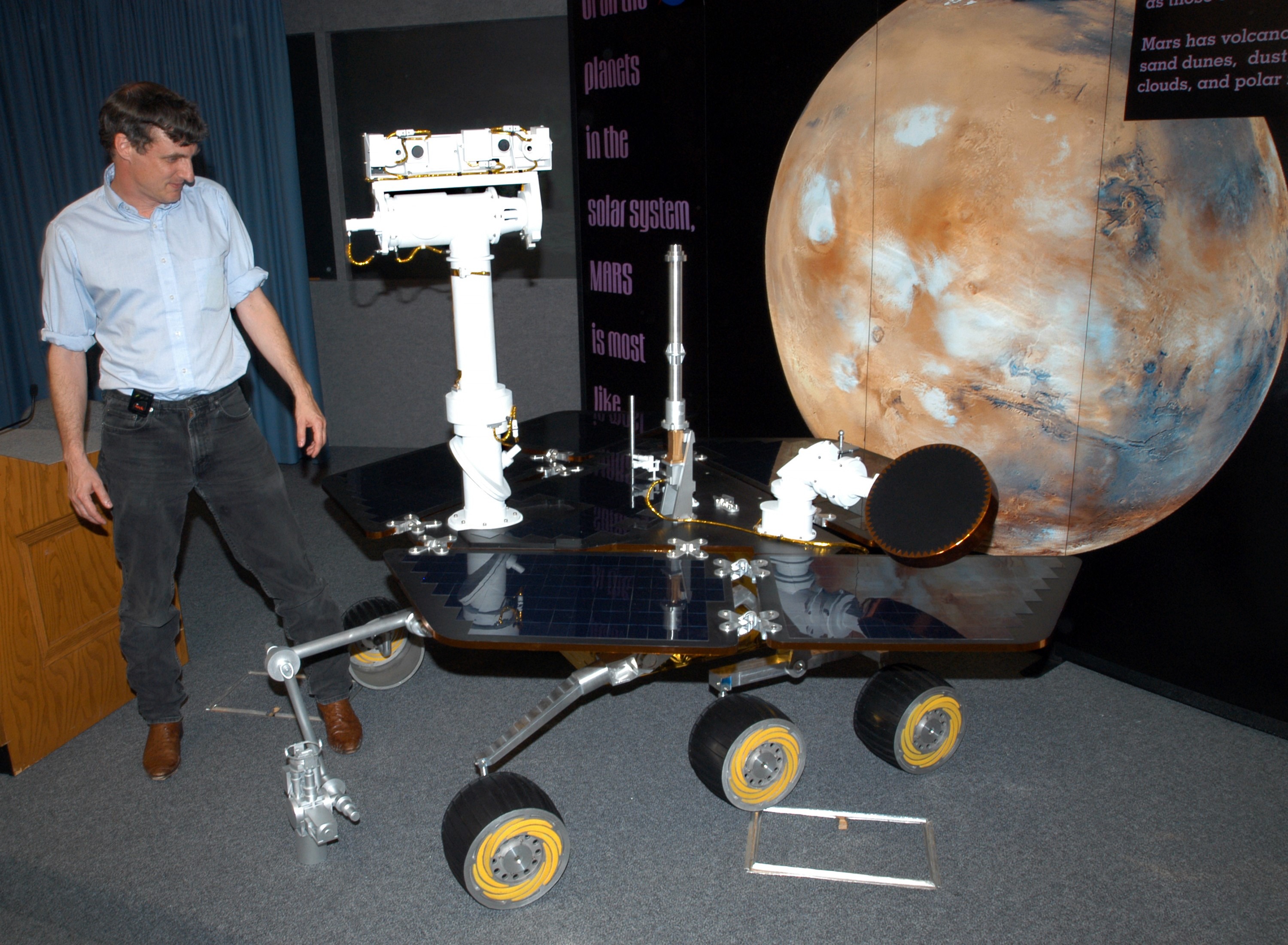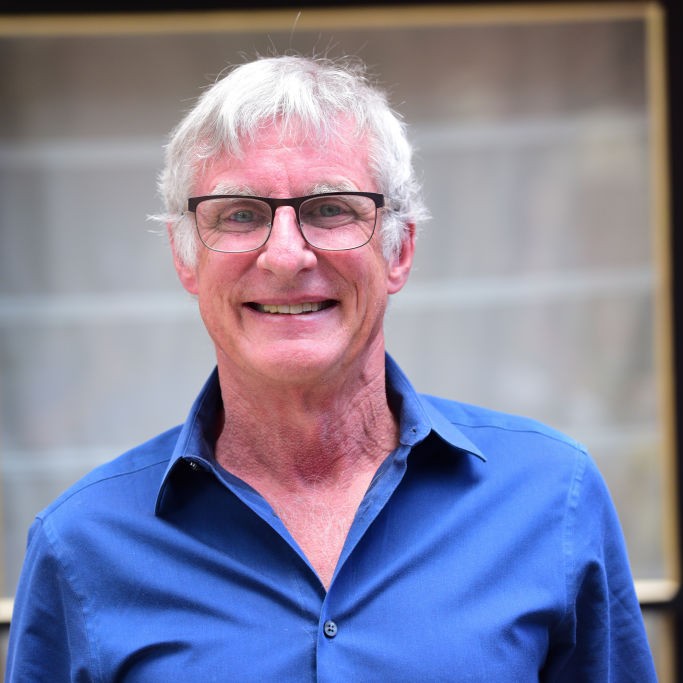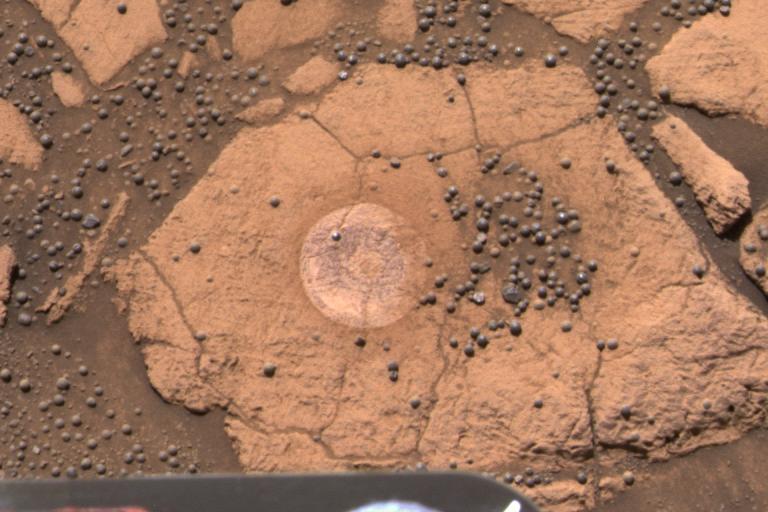Opportunity Mars rover leader Steve Squyres on 'Good Night Oppy' film, giving up Saturn
The Opportunity Mars rover was supposed to last a little more than three Earth months, and ended up surpassing 14 years.

Steve Squyres had big plans to move to a new planet once the NASA Opportunity Mars rover finished its mission, but that idea got "completely derailed."
That posed trouble (in a good sense) for Squyres, who was a member of the flagship Cassini mission at Saturn and was ready to move to flight operations after Opportunity stopped working on Mars.
The incredible journey of NASA's Opportunity is cataloged in the new Amazon Prime documentary "Good Night Oppy", which tells the story of the rover that lasted 14 years on Mars; its sister mission, Spirit, made it to six. The documentary premieres in theaters Nov. 4 and then launches worldwide on Prime Nov. 23.
Related: 'Good Night Oppy' director on his film about the Mars rover that refused to die (exclusive)
- Want to try Amazon Prime? Sign up for a free 30-day trial here.
- Subscribe to Amazon Prime for $12.99 a month

Steve Squyres is the James A. Weeks Professor of Physical Sciences at Cornell University and served as the Principal Investigator for the science payload on the Mars Exploration Rover Project.
Dr. Squyres has been a part of many of NASA's planetary exploration missions, including the Voyager mission to Jupiter and Saturn, the Magellan mission to Venus, and the Near Earth Asteroid Rendezvous mission. Squyres has also served as co-investigator on the Mars Express, Mars Reconnaissance Orbiter and Mars Science Laboratory missions, a member of the Gamma-Ray Spectrometer Team for the Mars Odyssey mission, and a member of the imaging team for the Cassini mission to Saturn.
Cassini arrived at Saturn in July 2004, when Opportunity's mission was working about three months past its 90-sol (Martian day) expiry date. Squyres thought Opportunity would last another year, maybe two. He scratched that estimate on a paper napkin, along with more buoyant bets from other team members.
Fast forward to 2017: the multi-billion-dollar Cassini was out of fuel and had to be destroyed. And as for Opportunity, billed at a modest $400 million at launch time? "We were still going," Squyres, the rover's principal investigator at his old employer Cornell University, told Space.com. (He kept and framed the napkin.)
Squyres, a geologist who today works as chief scientist at Blue Origin, spent 16 years co-developing the Mars Exploration Rovers (as the twin machines were called) while building up his experience on NASA missions like Voyager (which between two spaceships, explored all the official planets of the solar system) and Magellan (at Venus).
Get the Space.com Newsletter
Breaking space news, the latest updates on rocket launches, skywatching events and more!
Geology is a field of rigor and difficult to duplicate on Mars; what Opportunity could do in a day, as incredible as it was, would take a field geologist just 45 seconds, Squyres estimated. "There are procedures that you use. There are tools that you need. You're not just wandering around looking at rocks. It's this kind of iterative process, of hypothesis formulation and testing in a field environment with mobile tools."
Instrument formulation required replicating human-made tools as best as possible with the robotic technology of the late 1990s and early 2000s: 20/20 vision, a rock abrasion tool to carefully wear away boulders at low risk to the rover, a microscopic imager to replicate a hand lens, and six wheels for mobility.
"The way in which it [the mission] differed most significantly from doing real fieldwork was that it involved a huge team of scientists, and it unfolded in excruciatingly slow motion. And those two things actually went together," Squyres said, adding that having so many team members allowed him to make the best use of resources possible between uploading instructions to Opportunity.
In pictures: The last photos NASA's Opportunity rover took on Mars

The plan to try to play geologist on another planet blew past everyone's expectations within months, as Opportunity and Spirit together uncovered extensive evidence of water on Mars not yet imagined. Opportunity surpassed a marathon of roving and explored numerous craters, showing valuable geologic context still informing successor missions like NASA's Curiosity and Perseverance.
The reward of constant Red Planet learning kept Squyres going; even though he could have switched to Cassini at some point, he said, he was having too much fun. Back on Earth, Squyres was overseeing a team that was changing, bringing in a whole new generation of Mars explorers who as time went on, were in high school or even middle school when the mission launched. No matter anyone's age or experience, Squyres tried not to let his three decades of time on the Mars mission get in the way of good feedback.
"Peter Theisinger was the [first] project manager for me, with Pete on the engineering side and I on the science side," Squyres said. "We tried very, very, very hard to create a positive culture for our project that was really collaborative, really welcoming of everybody's ideas."
The side effect was that team members got attached to the mission, and of course, the rover. Young engineers quickly got accustomed to the project culture, to the extent that Squyres noticed something interesting on the mission shutdown night of Feb. 13, 2019 when a dust storm finally stopped Opportunity's journey forever.
Squyres looked around the room at "that very end, the final day, the final night, Billie Holiday singing in the background" and saw that "people who took the hardest were actually the young ones, the ones who'd only been with us for a year or two or three."
"It was the first mission they were on," he continued. "It was looking like the adventure of a lifetime, and it was over too soon. Yeah. I think they took it harder. I think those of us who've been at it for decades, it so much exceeded our expectations. It wasn't that hard to take."
In photos: How NASA said goodbye to the Opportunity rover on Mars
Squyres added that "Good Night Oppy" shows well the human side of space exploration, even if he had tiny quibbles with some inaccuracies. (The blinking light in the film showing the rover as "awake" or "asleep" was manufactured for audience engagement, for example.)
"I know a lot of people who are in this business, and none of us are in it to get famous. None of us are rich. We are in it because we are passionate about what we do," said Squyres.
"I think that that comes across in the film. I hope that people will take that on board, especially for the younger members of the audience, the ones who are sort of deciding what they want to do with their lives and what they want to do with it."
"I hope that a consequence of seeing this film," he added, "and hearing and seeing the story of Spirit and Opportunity will help them to understand how richly rewarding a career in science and engineering can be."
Follow Elizabeth Howell on Twitter @howellspace. Follow us on Twitter @Spacedotcom or Facebook.
Join our Space Forums to keep talking space on the latest missions, night sky and more! And if you have a news tip, correction or comment, let us know at: community@space.com.

Elizabeth Howell (she/her), Ph.D., was a staff writer in the spaceflight channel between 2022 and 2024 specializing in Canadian space news. She was contributing writer for Space.com for 10 years from 2012 to 2024. Elizabeth's reporting includes multiple exclusives with the White House, leading world coverage about a lost-and-found space tomato on the International Space Station, witnessing five human spaceflight launches on two continents, flying parabolic, working inside a spacesuit, and participating in a simulated Mars mission. Her latest book, "Why Am I Taller?" (ECW Press, 2022) is co-written with astronaut Dave Williams.









